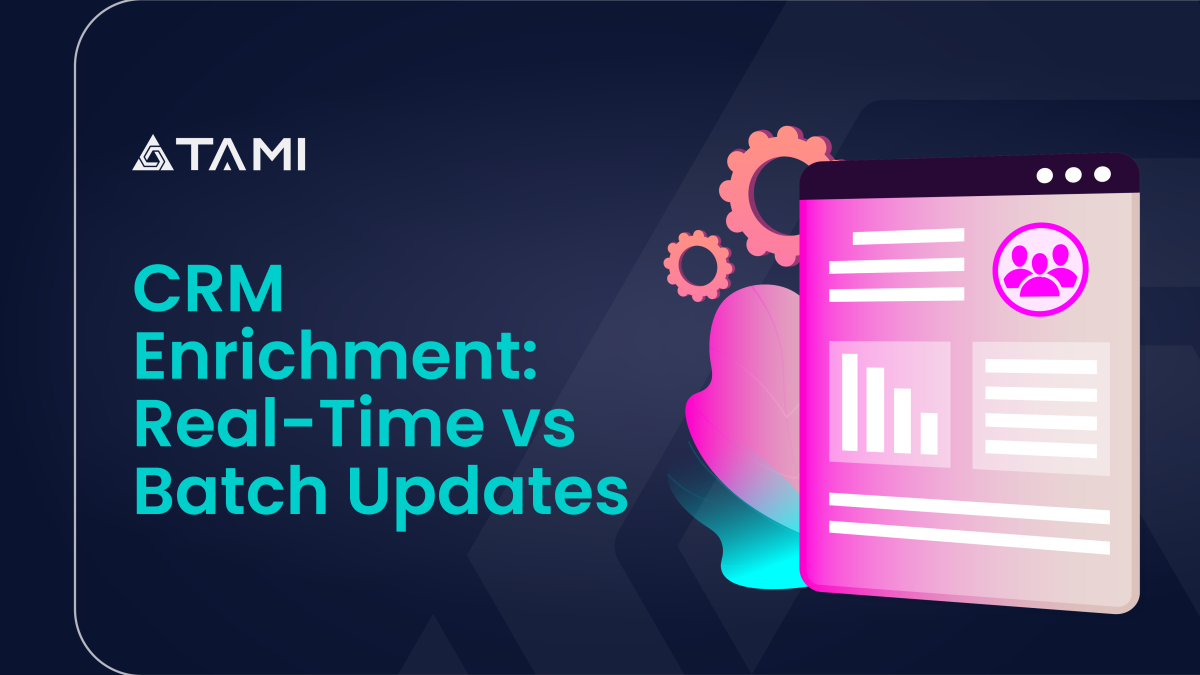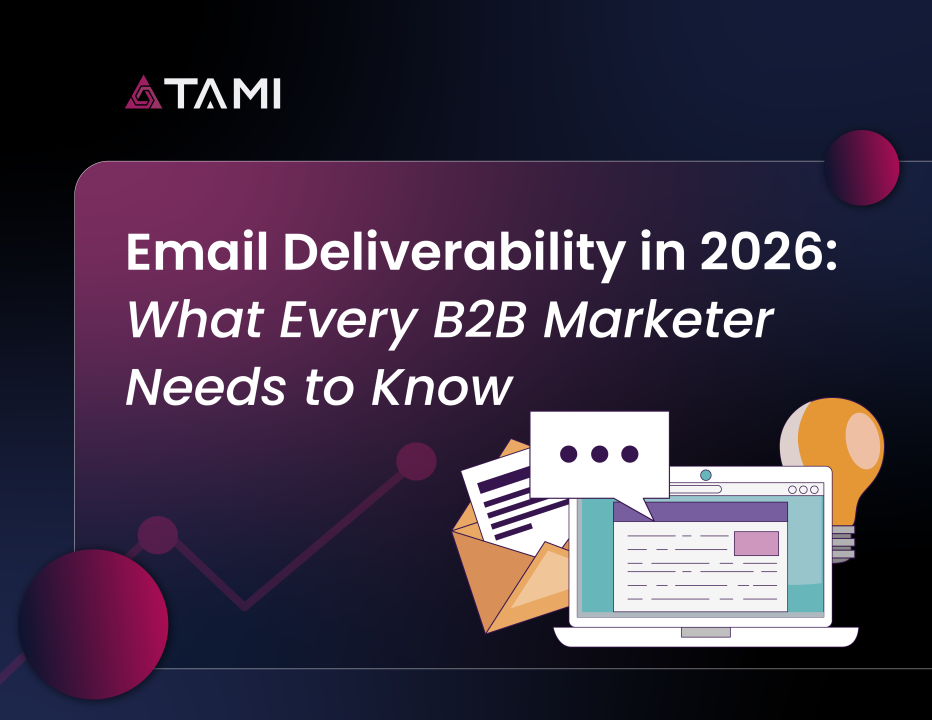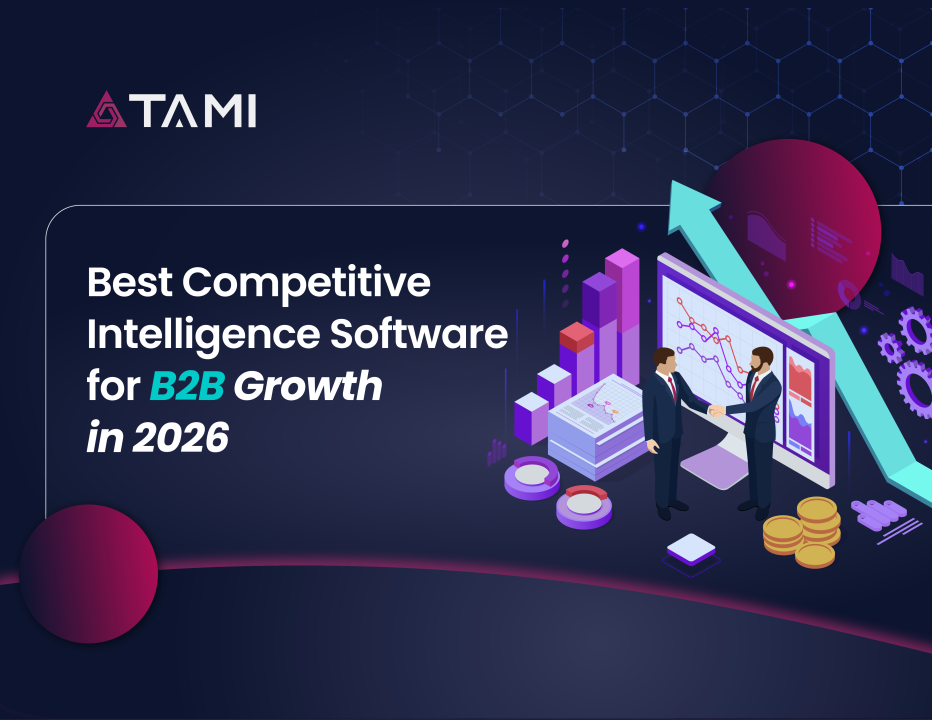
Why Your SDR Sales Team Is Wasting Time on the Wrong Leads
18/06/2025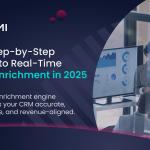
The Step-by-Step Guide to Real-Time Data Enrichment in 2025
24/06/2025Your CRM is only as powerful as the data behind it. Outdated, irrelevant, or misaligned records lead to missed opportunities, poor targeting, and wasted outreach. And when it comes to keeping that data fresh, the method you choose matters. In this post, we’ll break down the difference between real-time CRM enrichment and batch enrichment.
We’ll also highlight the trade-offs and show how modern go-to-market teams, especially those relying on dynamic targeting and fast-moving tech stacks, can use CRM enrichment to drive better results.
What Is CRM Enrichment?
CRM enrichment is the process of improving and expanding the data you already hold on your leads, customers, and accounts. It goes beyond the basics by filling in missing information such as job titles, tech stack details, or industry classifications.
It also involves updating stale contact information, like emails, phone numbers, and LinkedIn profiles, validating whether a company is still active, and tracking important changes like job moves or new role appointments.
Some enrichment tools even map new firmographic data like revenue bands or market segments. Ultimately, CRM enrichment transforms a static contact database into a dynamic, revenue-generating engine that sales and marketing teams can rely on for real-time targeting and outreach.
What’s the difference between batch vs real-time enrichment?
When it comes to keeping your CRM up to date, teams generally choose between two methods: batch enrichment or real-time enrichment. Both approaches serve the same goal: making your data cleaner, richer, and more actionable. But how and when they update your records varies significantly.
Batch CRM Enrichment
Batch enrichment is the traditional approach. You take a large set of contacts—often monthly, quarterly, or during a big CRM overhaul—and upload them to a third-party tool or vendor. That provider returns the file with updated, corrected, and sometimes deduplicated records.
This method works best for companies with longer sales cycles or those doing periodic data cleaning. It’s simple and doesn’t require integrating any new tools into your stack. The upside? It’s cost-effective at scale and can be a good fit for one-off projects like migrations or annual database audits.
The downside? It’s slow and static. By the time you act on the enriched data, some of it might already be outdated, especially in fast-moving industries or when tracking changes like job moves, technology adoption, or new market entries.
Real-Time CRM Enrichment
Real-time enrichment, on the other hand, runs in the background continuously. As new leads are added to your CRM or as existing records change, enrichment tools automatically update missing fields, verify emails, flag inactive contacts, and even detect things like competitor usage or Shopify tech stack changes. It’s seamless, instant, and always up to date.
This model is ideal for modern go-to-market teams that rely on speed, accuracy, and dynamic targeting. Whether you’re running multi-step outbound sequences, managing large inbound lead flow, or targeting specific segments like Shopify Plus brands, having real-time intel makes a measurable difference.
Of course, this level of accuracy and automation comes at a price. Real-time enrichment tools tend to cost more, and they require integration into your existing CRM or marketing platform. But if your sales team moves fast, or you need to personalize outreach at scale, the benefits usually outweigh the cost.
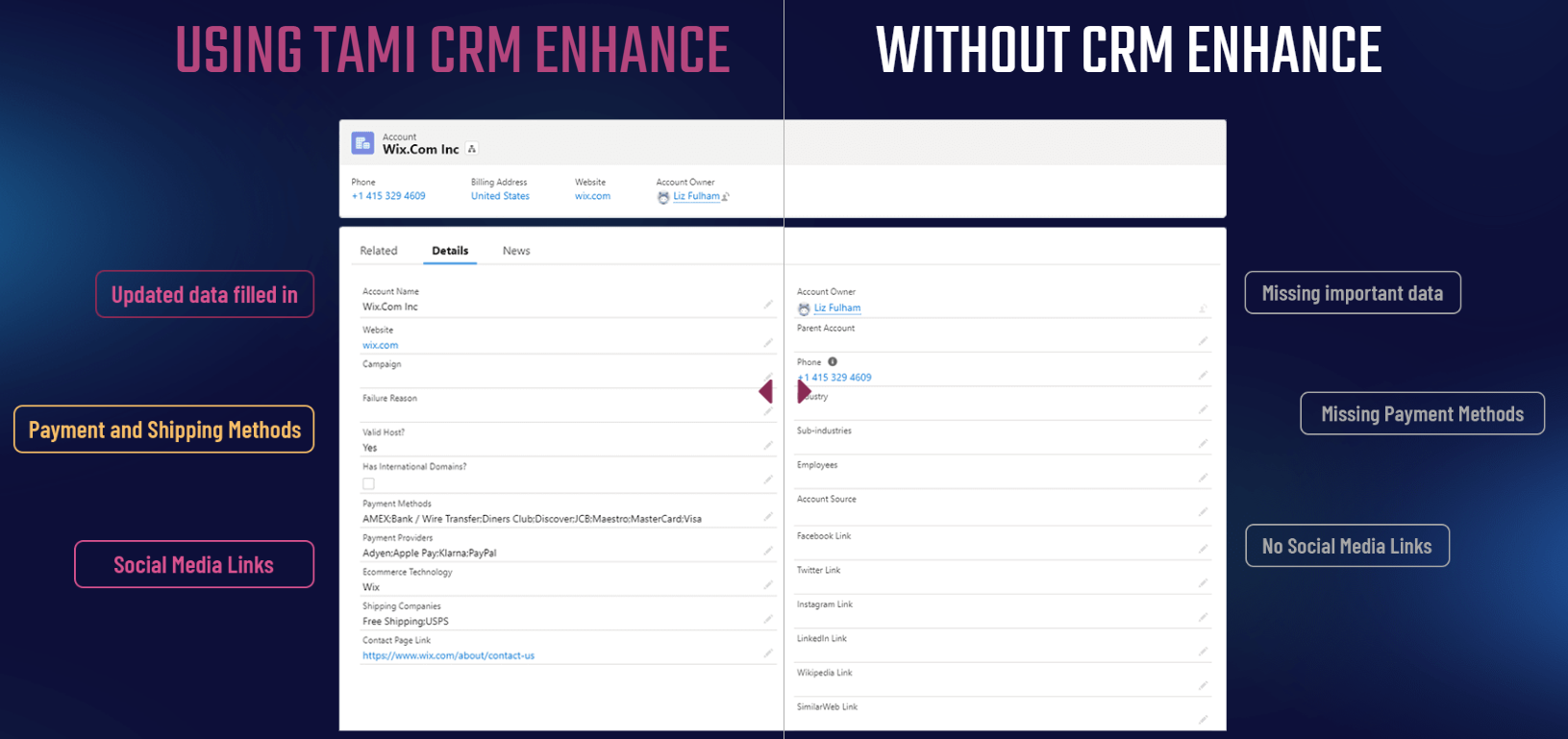
How to choose the right CRM enrichment method
Not every team needs real-time CRM enrichment, but every team needs some form of enrichment. The right choice depends on how often your data changes, how quickly you need to act on that change, and how your sales and marketing teams operate.
Here’s a quick breakdown to guide your decision:
Choose batch enrichment if:
- You have a long or seasonal sales cycle (e.g., enterprise services, consulting)
- Most of your outreach is campaign-based, not ongoing
- You’re doing a one-time CRM cleanup or migration
- Your lead volume is manageable and not updated frequently
- You don’t currently use marketing automation or sales acceleration tools
Example:
A B2B consulting firm enriches its contact list every quarter. The sales cycle takes months, and new leads are manually added. For them, quarterly batch updates are enough to maintain data hygiene.
Choose real-time enrichment if:
- Your sales team moves fast and handles high volumes of leads
- You rely on outbound sequences, retargeting, or personalized nurture flows
- You target verticals where companies switch tech stacks, change jobs, or scale quickly (like ecommerce or SaaS)
- You need live alerts when contacts change jobs, companies go dormant, or new tools are adopted
- Your CRM is integrated with tools like Salesforce, HubSpot, Pipedrive, or Mailchimp
Example:
A SaaS company selling to Shopify Plus brands uses TAMI to track when a merchant starts using a new tool like Klaviyo or Recharge. The moment that signal is detected, their CRM updates the record, alerts an SDR, and triggers an outbound sequence tailored to that tech stack. This level of speed and targeting wouldn't be possible with batch enrichment.
Real-life example of CTM enrichment
Let’s say you’re targeting ecommerce companies with a specific tech stack: Shopify Plus + Stripe + Klaviyo. You want to reach decision-makers just after they’ve upgraded to Shopify Plus, switched from a competitor, or entered a new region.
Without real-time enrichment, your team is guessing. You’d build a static list, filter for what you think matters, and start outreach based on outdated assumptions. Some of those companies may have changed platforms, gone inactive, or already chosen a competitor.
With real-time enrichment from a tool like TAMI, here’s what changes:
- The moment a company starts using Shopify Plus, your CRM reflects it
- New decision-makers are automatically identified and added to your pipeline
- Emails are validated in real time; bounce risk is minimized
- You get alerts when a prospect switches tech, hires a new Head of Marketing, or enters international markets
This enables your sales team to strike at the right time with the right message, backed by context.
Final thoughts
Your sales team can only be as effective as the data they work with, and CRM enrichment is a definite multiplier here. The only question is whether you need it continuously or periodically.
Batch enrichment is useful for cleaning up large datasets or prepping for one-off campaigns. But in fast-moving industries, real-time enrichment is essential. It ensures your outreach stays relevant, your CRM stays clean, and your pipeline stays full of high-fit leads.
Want to see it in action? Book a free demo and discover how TAMI can turn your CRM into a live revenue engine.

